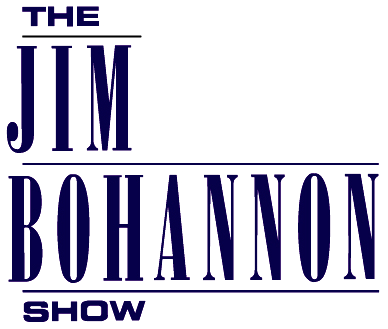INNOVATING INNOVATION INTRODUCTION
This book is about making innovation happen. Today, we are surrounded by remarkable examples of innovation and a handful of great companies are driving innovation by the exponential dimension of their business models. In this context, everyone says they want innovation. But the truth? Innovation is broken. Most business leaders and businesses struggle to find ways to crack through their own corporate politics and bureaucratic silos, to move from defense to offense, to nurture real breakthroughs, to drive bold creativity in ways that add new value to everything they do.
Innovation itself needs innovation. These pages teach, coach, and guide readers across eleven concrete and pragmatic steps that unlock and drive day-to-day innovation in your business and help you take long-term competitive advantage in your marketplace.
Innovation is old. As old as creation. It is the Big Bang. Anyone who has ever made a living selling anything knows that, in marketing, only one word is more powerful than “free.” It is “new”. In today’s change-fueled environment, innovation is more essential to survival—let alone success—than ever before. Still, never have so many businesses gotten so much innovation so wrong. Everyone talks innovation, demands innovation, but—almost everywhere—it is stalled, unfocused, or totally AWOL. Given lip service, it is bureaucratized, limped after, and crawled toward via the most rutted and washed-out roads in existence—the worn ways of incumbency, anachronism, and timid defensiveness.
We need something better. It may be conveyed in three simple sentences that, together, are the thesis of this book:
Innovation needs innovation. Innovation can be taught. Innovation can be accelerated.
Today, innovation cries out for a different, wider, more creative, and more pragmatic approach. Innovation needs wide-eyed dedication to product benefits, not squinting recitation of product features. The approach needs a dramatic reorientation away from a stiflingly narrow, overly technical, and backward-looking focus to a wider and deeper vision—one that is resolutely human, keenly perceptual, and always performance-directed. Innovation needs a new translation into a set of future-directed terms redefining marketing and leadership.
Innovating Innovation: How to Make Revolutionary Change Happen for You and Your Organization introduces the power of what I call the “disruptive periphery” versus the “bureaucratized center.” It offers a comprehensive and step-by-step set of tools forged by more than three decades of work with change leaders in politics and businesses worldwide. These are tools that enabled me to help pilot 19 winning global presidential campaigns, advise 10 billionaires, counsel 5 Nobel Peace Prize winners, and work with the CEOs of numerous Fortune 100 and 500 companies to help add hundreds of millions of dollars of value to these and other businesses.
Innovating Innovation synergizes what is best in classic innovation theories with an insurgent strategic model inspired by one of my first corporate clients, Apple founder Steve Jobs. This insurgent model is about change leadership, not just absorbing or embracing change but, rather, leading change by moving relentlessly to the strategic offense. Moreover, using the 17 great inventor Thomas Edison as our model, the book shows how to lead innovation to create the products of genius without the necessity for actual genius. It provides practical guidance on building and leading the teams, organizational structures, and cultures of market-made and market-making innovation. And it provides a roadmap to the disruptive periphery—the organizational margins at which real innovation happens.
Innovating Innovation is a framework to counter failure. It directs you, the reader, to the consumer, who is finally the only person who will tell you how to innovate the benefits to create a future you can own. This book invites you to think different, to become a change leader, to go the “wrong way” to get to the right places. And, in chapter 10, it shows you how to apply the pragmatic lessons of collaborative, responsive, and superefficient Agile software development—exploiting concepts such as adaptive experimentation and open innovation—to absolutely everything. All this, together, will accelerate your leadership career and your company’s success by stepping up from mere evolution to Punctuated Equilibrium, evolution as breakthrough.
You and your business require innovation as never before and unlike anyone else’s. This is lesson number one. And in the space of eleven chapters, I offer lesson number two: You do not need to be a genius to deliver the performances, products, and services of innovation at genius levels in this most opportunity-rich and threat-intensive business environment in history. And
finally, because time is money, and because innovation accelerated is innovation exponentially powerful, this book offers ways for leaders to drive velocity and make change happen faster.
This, then, is a step-by-step handbook for teaching and at times even tricking your organization, your culture, and your company into real-world change. It is the new battlefield manual for innovation.
Management consulting legend Peter F. Drucker wrote, “Business has only two functions: marketing and innovation. These produce revenues. All other functions are costs.” Two things are true about this dictum:
- It was true when he wrote it in his 1954 classic The Practice of Management.
- It is even more urgently true today.
No business long endures, let alone prospers, by embracing any strategy that must be
executed “at all costs.” Drucker knew this, of course. That is why he called for innovation and marketing. In fact, he put marketing before innovation. This is because one of his greatest management innovations was to put marketing in the driver’s seat precisely when it came to innovation.
Today, Drucker’s legacy is evident as our most successful companies leverage marketing to shape technological innovation to create revenue. If a business is led well, marketing drives innovation not at all costs, but at the right cost, and innovation will, in turn, leverage marketing not at all costs, but at the right cost.
We can’t all be Henry Ford, Bill Gates, or Steve Jobs. From all appearances, Ford, Gates, and Jobs created something out of nothing. Well, we can’t create something out of nothing.
That’s right. And, appearances to the contrary notwithstanding, neither did Ford, Gates, or Jobs.
Which brings me to Thomas Alva Edison. This book will unpack the way of thinking Edison brought to the 1,0931 US patents issued in his name—an American record until 2015.2 I argue that Edison’s true genius was not only his legendary perseverance, but also his way of thinking and process of invention.
In fact, it is common knowledge that Edison himself denied the sovereign power of genius. The only Edison quotation anyone ever repeats is: “Genius is 1 percent inspiration and 99 percent perspiration.” So, I argue that Edison found ways to punch above his weight when it
came to genius—both in terms of work ethic and in the way he thought about innovation and breakthrough.
From 1978 to 1986, actor Chris Robinson portrayed Dr. Rick Webber on the soap opera General Hospital. In 1984, Webber also appeared in a commercial for Vicks Formula 44 cough syrup. His pitch for the product began, “I’m not a doctor, but I play one on TV.” Suppose, then, that Edison was not a genius, but only acted like one on demand and consistently enough to secure 1,093 patents between 1868 and 1931, the year he died; an average of seventeen inventions each year for sixty-three years. Judged by those numbers, I am abundantly justified in proclaiming almost no one more prolifically innovative than Thomas Edison. Moreover, the scope of his innovation goes far beyond the numbers. Edison innovated a technology that created new, previously unimagined markets and an entire new reality in the human environment.
Chapter 1 of this book asks you to “Stop Being a Punchline.” It is about the business necessity of innovation, on the one hand, and, on the other, everything that is wrong with innovation today. Chapter 2 asks you to do what Edison did when he decided—yes, when he decided—to create his most iconic invention, the incandescent electric light. He decided to “subdivide light.” That was his phrase, and I know it sounds impossible, but he did exactly that. What is more, not only can you do it too, you can also lead others in doing it. (Spoiler alert: 20 It’s a combination of innovation and marketing, marketing and innovation.)
You can think of the rest of this book as a set of variations on the theory and practice of subdividing light, using marketing to drive innovation and innovation to create new markets.
Chapters 3, 4, and 5 are about creating and leading the teams, working conditions, organizational structures, market platforms, and a culture of market-made and market-making innovation. Most of all, they are about creating a disruptive periphery, the organizational margins in which real innovation takes place.
Chapter 6 is about using the consumer to help you innovate the benefits that create a future you can own.
Chapter 7 begins with the example of Christopher Columbus to point you in the right wrong direction, so that you can do what Steve Jobs asked all his employees and his customers to do: Think different.
Being a business leader today is like clinging to your 8-track player. Hey, we have changed centuries, and chapter 8 is about being a change leader, so that you and your organization can own the future by getting there first.
Warren Buffett has told the insanely wealthy how to become even more powerful by giving away all their money. Chapter 9 will tell you how to become more powerful by giving away all your authority (to the right people).
In chapter 10, again, we apply the lessons of Agile software development to absolutely everything, and in chapter 11 we move from the short term to the long by exploiting a revisionist Theory of Evolution called Punctuated Equilibrium.
These eleven chapters are a battlefield guide to thinking like a genius even if you are not a genius. They are a doable and actionable set of steps for innovating innovation. In this journey, we draw on some of history’s great innovators as well as on my work, interviews, and studies with such people as Bob Iger, Chairman and CEO, the Walt Disney Company; Fran Tarkenton, founder, GoSmallBiz; Mike Milken, founder, The Milken Institute; Eugene Burger, the World’s Top Close-Up Magician; John McLaughlin, Former Acting Director, CIA; David Copperfield, Las Vegas magician and headliner; Jerry Wind, The Lauder Professor Emeritus, The Wharton School; Scott Miller, Chairman and CEO, Core Strategy Group; Elon Musk, Chairman, SpaceX and CEO, Tesla Motors; Tim Cook, CEO, Apple; Bruce Springsteen, Rock Legend; and Mark Cuban, owner, The Dallas Mavericks—along with my company’s extensive consulting work with some of today’s most successful leaders of innovation, including Steve Jobs, Corazon Aquino, Bill Gates, Kim Dae Jung, Alex Gorsky, Rupert Murdoch, Mike Milken, Don Keough, Barack Obama, Bill Clinton, Sergio Zyman, David Bonderman, Pete Peterson, Phil Knight, Mike Roberts, Roberto Goizueta, Ray Smith, and many more.
Innovation isn’t new, but it needs to be innovated. Today’s markets not only demand this; in fact, they will show you how—if you let them. In these pages, I guide you through my real-world “Innovating Innovation” framework, which has been tested and proved across the battlefields of business.
For more information go to:
www.playoffense.com.
Or contact Team DMG Global at 202-223-7945.
 Romney gets personal, more likable
Romney gets personal, more likable The Point: The Underdog Advantage
The Point: The Underdog Advantage








